3000m late June, Sierra Nevada. 6am the snow is hard and icy, becoming soft and slushy after 11am
Sometimes you need to do a bit of lateral thinking for your mountain adventures. We might be only two hours from the sun drenched beaches of the Costa del Sol, but there is still some good mountaineering sport to be found. An early alpine start is the chief requirement. The snows are still quite plentiful in the Sierra Nevada, but do become soft and slushy after about 11am. At 6am above 3000m it is hard and icy.
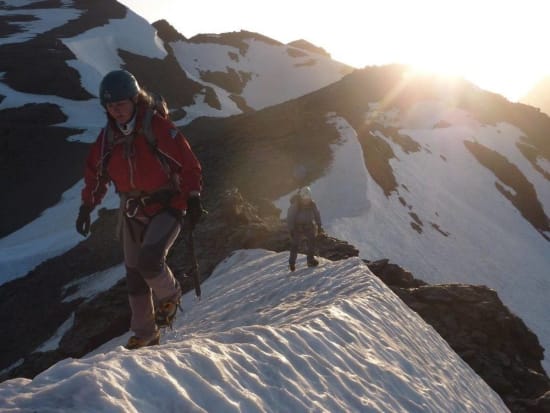
Early morning sun on Tajos de la Virgen ridge
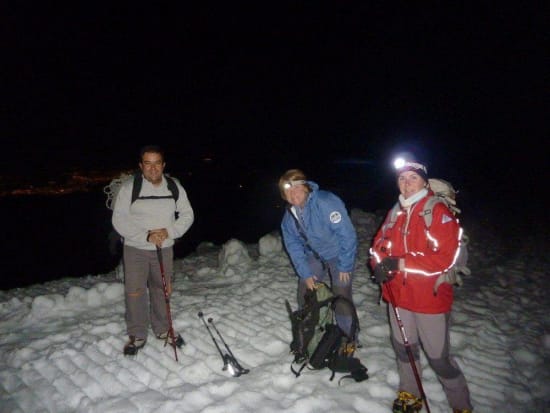
Is this really southern Spain?
It does take some application, but we managed to set off from our base in Lanjaron at 2am and reached the Hoya de la Mora above the ski area at 3am. A leisurely walk up the northern slopes of Veleta followed aiming for the Collado de Cariguela at first light. The mountains are wonderful places to be a night. Shooting stars, planets, a distant electrical storm far away in Murcia. While, seemingly the whole world sleeps, you crunch up through the snows.
We reached the Col de Cariguela at 6:30am. First light. Snow hard and crispy. Perfect climbing conditions. The Tajos de la Virgen ridge awaited us. The ridge runs from the col SW towards the Elorrieta hut and the Lanjaron Valley.
First surprise was that there was a fine snow arete to start off with. Instead of scrambling over blocky boulders we were able to walk along the crest of a fine snow ridge. Occasionally rocky steps intervened but we reached the first crux just as the first rays of the sun came over the top of Mulhacen to our east.
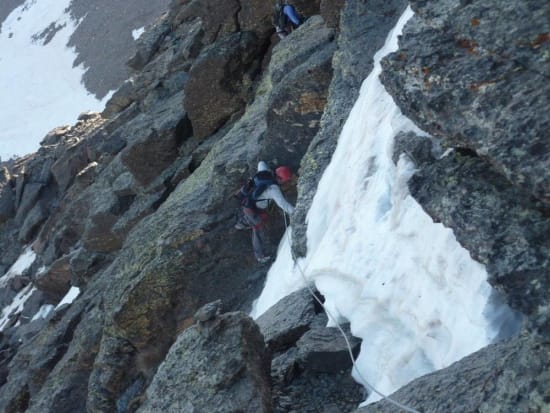
The traverse on the first step
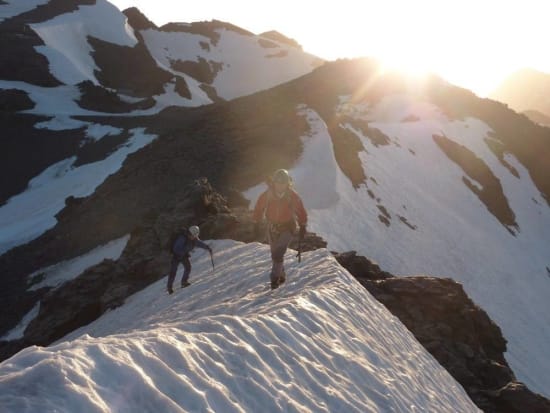
The sun arriving as we start the ridge
We took our crampons off for this next section, an exposed scramble along rising ramps on the NW side of the ridge. This led back to the crest where we resumed our snowy amble along delightful ridge sections.
We arrived at the Fraile de Capileira a 30m pinnacle easily visible from afar. Not being up for the hard climb to the top we bypassed the massive gendarme and traversed down to the second crux where a rock face blocks the way.
Some snow slopes off to our left looked very entertaining and would have provided excellent sport, but we elected for a slanting traverse and then a shallow ramp leading back right to the skyline. Other options exist here.
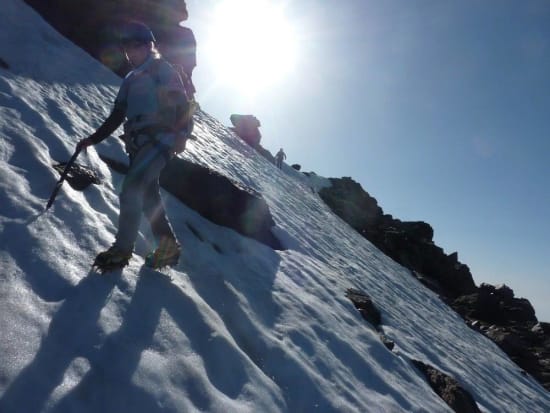
Descending to the second step
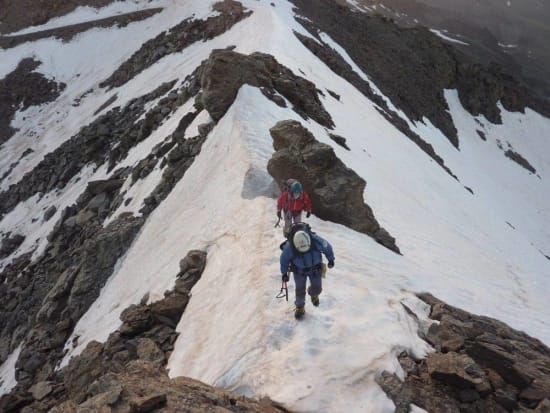
Along the ridge
By this time we had spent 3 hours on the ridge and the snow was beginning to turn. Rather than finish up the blocky ridge to the Elorrieta refugio we decided to descend some very steep ground to link with the normal track between Laguna de las Yeguas and the Elorrieta. This involved some delicate crampon work and a cool head.
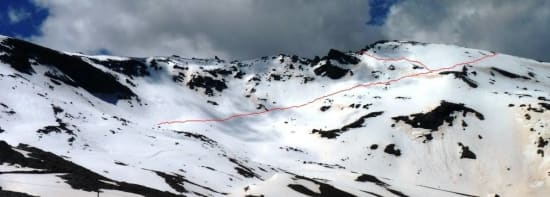
Traverses skyline R to L. Descent route shown in red
By 11am the snow had got heavy. We made the normal path and followed this back to the Hoya de la Mora, drove back through 36 deg heat in Granada and hence for some welcome beers in Lanjaron. We felt like spacemen returning from the planet "Zog"!
This ridge is an entertaining scramble in summer and a graded winter mountaineering route (AD-/PD+). Easier or harder options exist along the route. Thanks to fellow mountaineers, Kiersten Rowland, Jane Fields and Pepe Badaje for making it such a classic and memorable day.
